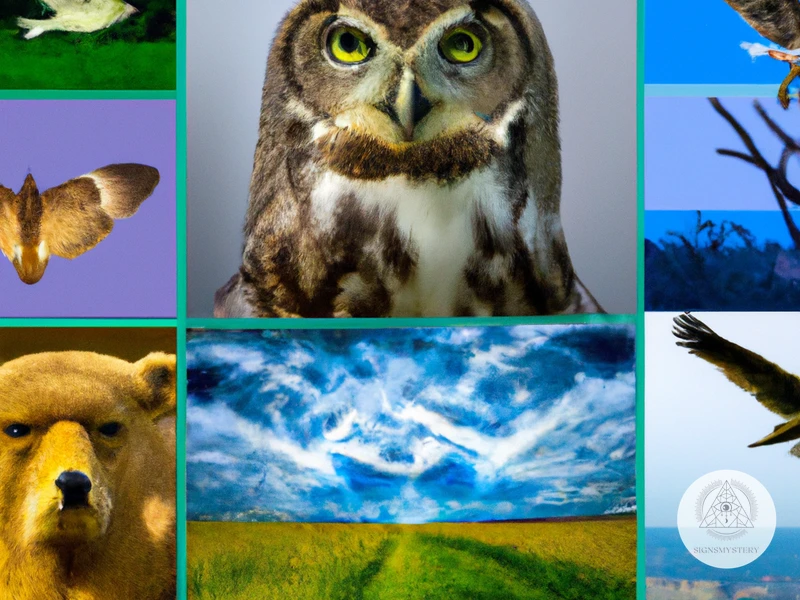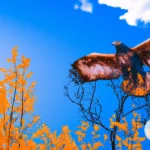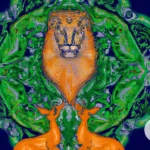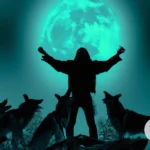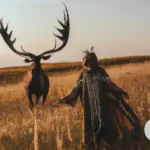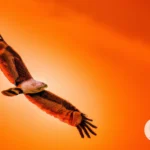The world we live in is filled with symbolism and hidden meanings, and one fascinating aspect of this is the concept of spirit animals. Although the idea of spirit animals has been around for centuries, it has evolved and taken on new significance in modern culture. People are now turning to spirit animals as a way to connect with their inner selves, express their emotions, and seek personal growth. Each choice of a spirit animal holds a deeper psychological meaning, and by understanding the symbolism behind these choices, we can gain insights into our own lives and journeys. In this article, we will delve into the psychology of modern spirit animals, exploring the reasons behind these choices and the powerful impact they can have on our lives.
The Concept of Spirit Animals
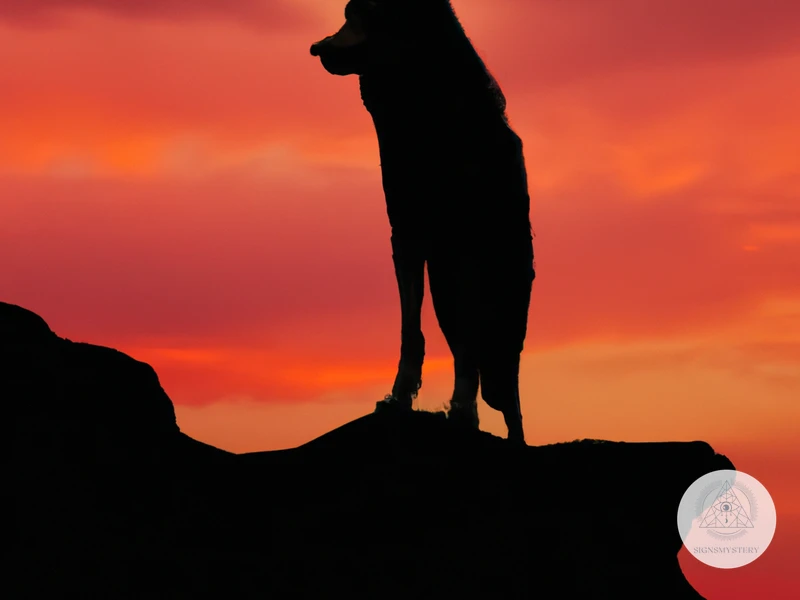
The concept of spirit animals is deeply rooted in various cultures and spiritual practices around the world. Spirit animals, also known as animal guides or power animals, are believed to be spiritual beings that provide guidance, support, and protection to individuals. They are seen as manifestations of higher consciousness and are often associated with specific traits, qualities, or symbolism. The idea of spirit animals can be traced back to indigenous cultures, where these animals were considered allies and mediators between humans and the spirit world. In modern times, the concept of spirit animals has gained popularity and found its place in diverse contexts, including psychology, self-help, and spirituality.
Spirit animals are seen as personal guides that offer wisdom, strength, and insight to individuals on their life journey. Each person is believed to have their own unique spirit animal, which reflects their personality, strengths, and challenges. This connection is often discovered through introspection, dreams, or meditation.
In Celtic paganism, for example, animal spirit guides play a significant role in spiritual practices. These guides are known as “animal familiars” and are seen as companions that help individuals navigate their spiritual path. Celtic animal spirit guides, such as the stag, owl, or salmon, carry specific symbolism and meaning that offer guidance and support.
Finding one’s animal guide can be an introspective and spiritual process. Techniques and practices such as meditation, visualization, and dream analysis can be used to deepen the connection and understanding of one’s spirit animal. These practices allow individuals to tap into their subconscious mind and establish a communication channel with their animal guide.
By exploring the concept of spirit animals and understanding the role they play in various cultures and belief systems, we can gain a greater appreciation for their significance in modern society. Spirit animals serve as symbols of guidance, empowerment, and self-exploration, and their presence can be a source of inspiration and personal growth. Whether it’s a traditional belief rooted in indigenous cultures or a modern interpretation in the realms of psychology and self-help, the concept of spirit animals continues to captivate our imaginations and provide us with a deeper understanding of ourselves and the world around us. [1,2,3]
The Evolution of Spirit Animals in Modern Culture
The concept of spirit animals has undergone a significant evolution in modern culture, reflecting the changing beliefs and attitudes of society. In the past, spirit animals were primarily associated with indigenous cultures and their spiritual practices. However, in recent years, spirit animals have gained popularity among a broader audience and have become part of popular culture, psychology, and self-help movements.
One factor contributing to the evolution of spirit animals in modern culture is the increasing interest in personal growth and self-discovery. People are seeking deeper connections with themselves and the world around them, and spirit animals offer a unique avenue for exploration. They provide a symbolic language through which individuals can understand and express their innermost desires, challenges, and aspirations.
The rise of social media and online communities has played a significant role in popularizing spirit animals. Platforms like Instagram and Pinterest are flooded with images and quotes related to spirit animals, making them more accessible and appealing to a wider audience. Memes, artwork, and merchandise featuring spirit animals have become trendy, allowing individuals to express their spiritual beliefs and personal symbolism.
The incorporation of spirit animals into contemporary therapeutic approaches and self-help techniques has contributed to their prominence in modern culture. Animal-assisted therapy, for example, utilizes the presence and symbolism of animals to promote healing and emotional well-being. Dream analysis, another popular approach, examines the presence of animals in dreams as possible spirit animal connections.
Spirit animals have also found their way into popular literature, films, and TV shows, further embedding themselves in modern culture. For instance, books like “Animal-Speak” by Ted Andrews and the “His Dark Materials” trilogy by Philip Pullman explore the symbolism and significance of spirit animals, captivating readers with their mystical allure.
In modern paganism and neoshamanic practices, spirit animals continue to hold a central place. Many individuals who follow these belief systems work with specific animal guides as part of their spiritual rituals and ceremonies [1].
The evolution of spirit animals in modern culture reflects a growing desire for self-exploration, personal growth, and spiritual connection. From its roots in indigenous cultures to its integration into mainstream society, the concept of spirit animals has evolved to meet the needs and interests of individuals seeking meaning, guidance, and inspiration in their lives [2].
[1] For more information on Celtic animal spirit guides in modern paganism, see this article.[2] If you’re interested in learning techniques for finding your own animal guide, check out this resource.
[3] To deepen your connection with your spirit animal through meditation, consider trying out these techniques.
The Symbolism Behind Modern Spirit Animal Choices

The symbolism behind modern spirit animal choices can be attributed to various factors, including personal connection, cultural influence, emotional expression, and self-reflection and growth.
1. Personal Connection: One of the main reasons individuals select a particular spirit animal is based on a personal connection they feel towards it. This connection can stem from a deep admiration for the animal’s traits, characteristics, or behaviors that resonate with their own values or aspirations. For example, someone who values courage and leadership might choose the lion as their spirit animal due to its association with these qualities.
2. Cultural Influence: Modern spirit animal choices can also be influenced by cultural factors such as folklore, myths, and popular symbolism. Certain animals may hold specific meanings or associations within a particular culture, leading individuals to gravitate towards those animals as their spirit guides. For instance, in Native American culture, the owl is often associated with wisdom and intuition, making it a popular choice for those seeking guidance in these areas.
3. Emotional Expression: Spirit animals can also serve as a means of emotional expression. Individuals may choose a spirit animal that represents or embodies the emotions, desires, or challenges they are currently facing in their lives. By identifying with an animal that resonates with their emotions, they can better understand and navigate their own experiences. For example, someone going through a period of personal transformation and growth may choose the butterfly as their spirit animal to symbolize their journey.
4. Self-Reflection and Growth: Modern spirit animal choices can also be driven by a desire for self-reflection and personal growth. Selecting a spirit animal can serve as a tool for individuals to explore their own strengths, weaknesses, and areas of personal development. By embodying the qualities and symbolism associated with their chosen spirit animal, individuals can cultivate these traits within themselves and work towards personal transformation and growth.
The symbolism behind modern spirit animal choices is a complex interplay of personal beliefs, cultural influences, emotional expression, and the desire for self-development. By understanding the motivations behind these choices, individuals can gain insights into their own aspirations, challenges, and paths towards personal fulfillment and well-being.
1. Personal Connection
1. Personal Connection
One of the key reasons behind the symbolism and popularity of modern spirit animal choices is the personal connection individuals feel towards certain animals. Each person’s choice of a spirit animal is unique and deeply personal, often reflecting their innermost feelings, experiences, and desires. This connection can stem from a variety of factors:
– Past experiences: Individuals may resonate with a particular animal due to past encounters or experiences. For example, someone who has had a positive encounter with a fox may feel a strong personal connection to it, considering it their spirit animal.
– Personality traits: People often choose spirit animals that embody qualities or traits they admire or aspire to possess. For instance, someone who desires courage and resilience may choose a lion as their spirit animal, as lions are commonly associated with these traits.
– Inner struggles: Spirit animals can represent aspects of the self that individuals are grappling with or seeking to understand better. For instance, someone who is going through a period of transformation and growth may choose a butterfly as their spirit animal, symbolizing their journey of personal development.
– Intuition and gut feeling: Sometimes, the choice of a spirit animal is driven by an intuitive sense or gut feeling. Individuals may feel naturally drawn to a particular animal, even without a clear logical explanation. This intuitive connection often holds deep significance and can uncover hidden aspects of the self.
– Symbolic associations: Certain animals have established symbolic associations in various cultures, which may resonate with individuals on a personal level. For example, the owl is often associated with wisdom and intuition, and individuals who value these qualities may choose it as their spirit animal.
It is important to note that personal connection to a spirit animal may evolve over time. As individuals grow and experience different phases of life, their spirit animal may change to reflect their evolving needs and aspirations. The personal connection to a spirit animal serves as a reminder of one’s inner strengths and values, providing guidance and support along life’s journey.
2. Cultural Influence
Cultural influence plays a significant role in shaping the choices of modern spirit animals. Our cultural backgrounds, upbringing, and societal norms greatly impact the symbolism and meaning we attribute to different animals. In some cultures, certain animals hold deep cultural and spiritual significance, making them more likely choices as spirit animals.
For example, in Native American cultures, animals like the eagle, bear, or wolf are often seen as sacred and powerful beings. These animals carry a rich symbolism and are revered for their qualities such as strength, wisdom, and connection to nature. As a result, individuals with Native American heritage or those who resonate with the teachings and values of these cultures might choose these animals as their spirit guides.
In contrast, other cultures might have different animals that hold significance. In Chinese culture, the dragon is often revered for its auspicious qualities and is considered a symbol of power and good fortune. As a result, individuals influenced by Chinese culture may be more inclined to choose the dragon as their spirit animal.
The cultural influence on spirit animal choices is not limited to specific ethnic or traditional cultures. Popular media, such as movies, books, or even internet trends, can also shape our perceptions and preferences. For example, after the release of movies like “The Lion King” or “Kung Fu Panda,” the lion or the panda might gain popularity as chosen spirit animals due to the positive and inspirational portrayals of these animals in the films.
Ultimately, cultural influence plays a significant role in the selection of modern spirit animals. Whether it stems from traditional cultural practices, personal heritage, or the impact of popular media, these cultural influences shape our understanding and connection with different animals. [4,5]
3. Emotional Expression
Emotional expression is a key factor in understanding the symbolism behind modern spirit animal choices. Spirit animals often resonate with individuals on an emotional level, representing certain emotions, feelings, or aspects of their personality that they may want to express or explore. The selection of a particular spirit animal can serve as a form of self-expression, allowing individuals to connect with and communicate their emotions in a unique and meaningful way.
Certain spirit animals, such as the lion or the wolf, are commonly associated with traits like courage, strength, and resilience. Choosing these animals as spirit guides may indicate a desire to tap into these emotions and embody these qualities. It can be a way for individuals to express their inner strength and determination, especially during challenging times in their lives.
On the other hand, gentle and graceful spirit animals like the butterfly or the dolphin may represent emotions of serenity, joy, and tranquility. Opting for these animals as spirit guides may be a way for individuals to express and embrace their lighter, more carefree side. It can serve as a reminder to find beauty and happiness amidst the chaos of life.
Spirit animals can also represent emotions that individuals may struggle to express or understand. For example, the owl is often associated with wisdom and intuition. Choosing the owl as a spirit guide may reflect a desire to explore and enhance one’s intuitive abilities or to seek clarity and wisdom in decision-making processes. It can be a way for individuals to express their need for deeper understanding and insight in their lives.
The selection of a spirit animal is not solely based on personal connection or cultural influence but also on emotional expression. By choosing a spirit animal that resonates with their emotions, individuals can express and explore different facets of their personality, desires, and inner world. The symbolism behind modern spirit animal choices provides a unique avenue for individuals to connect with and embrace their emotions, ultimately promoting a deeper understanding and acceptance of oneself.
4. Self-Reflection and Growth
Self-reflection and growth are key elements in the symbolism behind modern spirit animal choices. When individuals choose a spirit animal, it often reflects aspects of themselves that they aspire to develop or embody. The connection with a specific spirit animal can serve as a reminder to cultivate certain qualities or work on personal growth.
One reason why individuals may choose a spirit animal for self-reflection and growth is to gain insight into their strengths and weaknesses. By identifying with a particular animal, individuals can explore the traits and characteristics associated with that animal and reflect on how they align with their own personality. For example, someone who chooses a lion as their spirit animal may be seeking to develop qualities such as courage, leadership, and assertiveness.
Additionally, spirit animals can also serve as a symbol of transformation and personal evolution. Just as animals undergo various stages of growth and transformation in their lives, individuals can see their own journeys mirrored in the symbolism of their chosen spirit animal. This understanding can provide inspiration and motivation to embrace change, overcome challenges, and strive for personal development.
The symbolism behind spirit animal choices also encourages individuals to connect with their instincts and primal nature. Animals are often seen as in tune with their natural instincts, and by choosing a spirit animal, individuals are encouraged to tap into their own intuition and follow their instincts in making decisions or navigating their lives.
It is important to note that the interpretation of spirit animal symbolism may vary from person to person. While some individuals may resonate with an animal’s symbolism for self-reflection and growth, others may choose a spirit animal based on unique personal experiences or cultural influences.
Spirit animals serve as powerful reminders of the potential for personal growth and transformation. By reflecting on the qualities and symbolism associated with a chosen spirit animal, individuals can integrate these attributes into their lives and embark on a journey of self-improvement and inner exploration. Through self-reflection and growth, individuals can strive to become the best versions of themselves, guided by the wisdom and symbolism of their chosen spirit animal. [4,5]
Interpreting Specific Modern Spirit Animal Choices
Interpreting specific modern spirit animal choices can provide valuable insights into an individual’s personality, aspirations, and journey. While the range of spirit animals is vast, certain animals have gained popularity and are commonly associated with particular qualities and symbolism. These interpretations may vary depending on cultural beliefs and personal associations. Let’s explore the symbolism behind a few prevalent modern spirit animal choices:
1. Lion: Courage and Leadership
The lion is often associated with bravery, strength, and leadership. Choosing the lion as a spirit animal may indicate a person’s desire to embody these qualities in their life. It can signify their need for courage and their aspiration to take charge and lead others. The lion spirit animal represents confidence, assertiveness, and the ability to overcome challenges with grace.
2. Owl: Wisdom and Intuition
The owl is a symbol of wisdom, knowledge, and keen intuition. Selecting the owl as a spirit animal suggests a person’s strong connection to their inner wisdom and their ability to see beyond the surface. It can signify their propensity for introspection, deep thinking, and the desire to expand their knowledge and understanding of the world. The owl spirit animal is often associated with guidance, mystery, and the ability to navigate through the darkness with clarity.
3. Wolf: Loyalty and Teamwork
The wolf is known for its loyalty, teamwork, and strong sense of community. Choosing the wolf as a spirit animal may indicate a person’s value for deep connections and their inclination to work collaboratively towards a common goal. It can symbolize their dedication to their family, friends, or community, and their belief in the strength of unity. The wolf spirit animal represents loyalty, intuition, and the ability to thrive within a social structure.
4. Butterfly: Transformation and Growth
The butterfly is a powerful symbol of transformation, growth, and the beauty of change. Selecting the butterfly as a spirit animal may indicate a person’s journey of self-discovery, personal growth, and the desire for positive transformation. It can represent their willingness to embrace change and let go of the old to make room for the new. The butterfly spirit animal is often associated with grace, resilience, and the ability to undergo profound personal metamorphosis.
It is important to note that these interpretations are not fixed, and the meaning behind a spirit animal choice can vary from person to person. Personal experiences, cultural influences, and individual perspectives all play a role in shaping the symbolism associated with spirit animals. By exploring and understanding the significance of specific spirit animal choices, individuals can gain a deeper understanding of their own aspirations, qualities, and personal journey of growth and self-discovery. [4,5,6]
1. Lion: Courage and Leadership
The lion is a powerful and majestic creature that has long been associated with courage and leadership. As a spirit animal, the lion embodies these qualities and serves as a symbol of strength and assertiveness. People who resonate with the lion as their spirit animal often possess these characteristics and are courageous in the face of challenges. They have a natural ability to take charge and lead others, inspiring confidence and respect.
Those who connect with the lion as their spirit animal often exhibit strong leadership skills. They have the ability to guide others and make tough decisions with confidence and conviction. Just as lions protect their pride, these individuals are protective of those they care about and are driven by a sense of loyalty and responsibility.
The lion as a spirit animal also represents bravery and courage. People guided by the lion are not afraid to face their fears and take risks in pursuit of their goals. They approach obstacles head-on and are not easily deterred. Their inner strength and resilience allow them to face adversity with determination and grace.
In addition to these qualities, the lion also symbolizes personal power and self-confidence. Those who resonate with the lion as their spirit animal often have a strong sense of self and are not afraid to assert themselves and stand up for what they believe in. They inspire others with their confidence and radiate a sense of authority.
It is important to note that while the lion represents courage and leadership, it also encourages individuals to find a balance between assertiveness and compassion. The lion reminds us that effective leadership is not just about commanding authority, but also about nurturing and protecting those under our care.
Those who feel a connection to the lion as their spirit animal can draw upon its symbolism to harness their own inner strength and exhibit courageous leadership in their lives. By embracing the lion’s qualities of courage, assertiveness, and responsibility, individuals can tap into their true potential and make a positive impact in their personal and professional lives.
2. Owl: Wisdom and Intuition
The owl is a powerful and mysterious creature that has long been associated with wisdom and intuition. As a modern spirit animal choice, the owl represents a deep connection to inner knowledge and the ability to see beyond the surface. Owls are known for their keen eyesight and their ability to navigate through the darkness with ease, symbolizing the capacity to perceive hidden truths and uncover hidden meanings.
Choosing the owl as a spirit animal often reflects a desire for wisdom, guidance, and a heightened intuition. Individuals who connect with the owl may seek clarity in their lives or have a strong desire to tap into their inner wisdom for decision-making and problem-solving. The owl’s presence can serve as a reminder to trust one’s instincts and intuition, as these are valuable sources of insight and guidance.
The symbolism of the owl extends beyond its associations with wisdom and intuition. It is a creature often linked to mystery, magic, and the unseen realms. In many cultures, the owl is considered a messenger between the human and spirit worlds, bridging the gap between the conscious and unconscious realms. Its nocturnal nature and silent flight make it an enigmatic creature that embodies secrets and hidden knowledge.
The owl’s symbolism is also influenced by its association with Athena, the Greek goddess of wisdom. In Greek mythology, Athena was often depicted with an owl as her companion, highlighting the owl’s association with wisdom, knowledge, and intellectual pursuits. The owl’s presence as a spirit animal can, therefore, signify a connection to intellectual pursuits, learning, and the pursuit of knowledge.
The choice of the owl as a modern spirit animal reflects a deep yearning for wisdom, a connection to intuition, and a desire to delve into the mysteries of life. The owl’s symbolism encompasses not only wisdom and intuition but also mystery, magic, and the divine. By embracing the energy of the owl, individuals can tap into their inner reservoirs of knowledge, develop their intuition, and gain a broader perspective on life’s challenges and opportunities. [4,5]
[4] Read more about finding your animal guide techniques and practices:
/finding-your-animal-guide-techniques-practices/
/techniques-for-deepening-connection-spirit-animal-meditation/
3. Wolf: Loyalty and Teamwork
The wolf is a powerful and revered symbol in many cultures around the world, representing loyalty and teamwork. As a spirit animal, the wolf embodies qualities such as social intelligence, cooperation, and a strong sense of community. Wolves are highly social animals, living and hunting in packs, and their ability to work together is a testament to their strong bonds and harmonious relationships within their groups.
When someone chooses the wolf as their spirit animal, it often signifies their value for loyalty and their understanding of the importance of teamwork. Wolves are known for their strong sense of unity and cooperation, and those who resonate with the wolf spirit often possess these same characteristics in their personal and professional lives. They recognize the power of collaboration and are willing to work together to achieve common goals.
The wolf teaches us the significance of supporting one another in our endeavors. They show us that by forming strong connections and relying on the strengths of each individual within a group, we can accomplish great things as a collective. The idea of teamwork extends beyond mere cooperation; it involves trust, communication, and a shared sense of purpose.
Those who are guided by the wolf spirit are often fiercely loyal to their friends, family, and community. They prioritize the well-being and success of the group as a whole, rather than individual achievement. Their loyalty
Subscribe to Our Newsletter
Sign up to receive the latest news and updates.
The wolf’s symbolism can also represent the importance of embracing one’s own individuality while still being an integral part of a larger group. Wolves have a distinct hierarchy within their packs, with each member having a unique role to play. This teaches us that while we value teamwork and collaboration, we should also celebrate and utilize our own skills, talents, and strengths.
The wolf spirit animal represents loyalty and teamwork. It reminds us of the power of collective efforts and the strength that can be found in unity. By embodying the qualities of the wolf, we can deepen our connections with others, foster a strong sense of community, and achieve common goals through mutual support and collaboration.
4. Butterfly: Transformation and Growth
The butterfly is a symbol of transformation and growth, and choosing it as a spirit animal signifies a deep desire for personal and spiritual development. The butterfly starts its life as a caterpillar, slowly inching its way through life until it undergoes a remarkable transformation and emerges as a beautiful butterfly. This process of metamorphosis symbolizes the potential for profound change and growth within ourselves.
When the butterfly appears as a spirit animal, it often signifies that a major transformation is about to take place in one’s life. This could be a physical, emotional, or spiritual transformation, where old patterns and beliefs are shed to make way for new beginnings. The butterfly teaches us that change can be beautiful and that embracing it allows us to experience personal growth and evolution.
The symbolism of the butterfly’s wings also holds significance. The intricately patterned and delicate wings symbolize the power of self-expression and creativity. It encourages individuals to embrace their unique qualities and talents, allowing them to spread their wings and explore new possibilities.
Additionally, the butterfly’s ability to gracefully navigate through the air suggests that flexibility and adaptability are essential in times of transformation. It reminds us to be open to new experiences and to embrace the unknown with curiosity and courage.
Choosing the butterfly as a spirit animal can also indicate a need for inner healing and self-discovery. Just as the butterfly goes through a period of isolation within its chrysalis, individuals who resonate with the butterfly as a spirit animal may be experiencing a time of introspection and self-reflection. This period of solitude allows for deep inner growth, leading to a renewed sense of self-awareness and a stronger connection to one’s own purpose and spirituality.
The butterfly as a modern spirit animal represents the beautiful and transformative journey of life and the potential for growth and self-expansion. It encourages individuals to embrace change, express their unique qualities, and embark on a path of self-discovery. By embodying the symbolism of the butterfly, individuals can find inspiration and guidance in their personal transformation, ultimately leading to a more fulfilled and purposeful life.
The Role of Modern Spirit Animals in Therapy and Self-Discovery
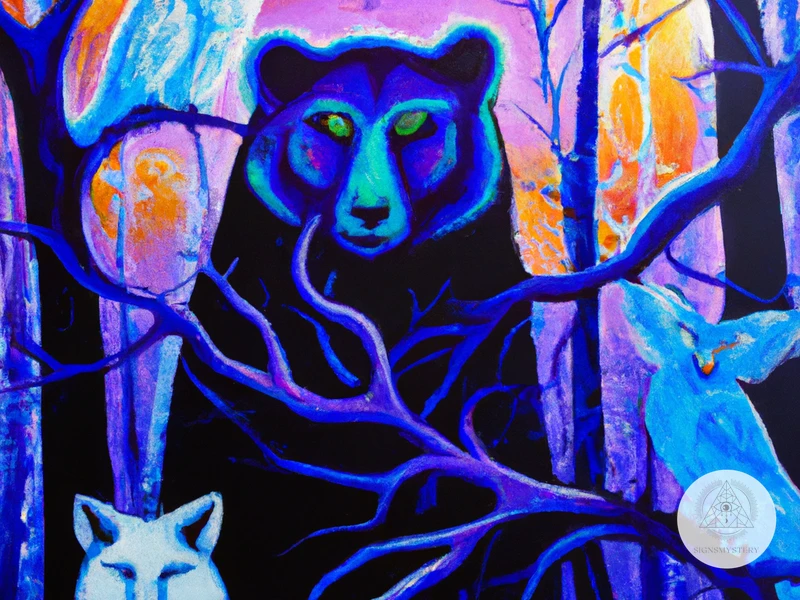
The role of modern spirit animals extends beyond personal belief and spirituality; it has also found its place in therapy and self-discovery practices. Spirit animals are now being utilized as a tool for healing, personal growth, and self-reflection in various therapeutic modalities. Here are three ways in which modern spirit animals are used in therapy and self-discovery:
- Animal-Assisted Therapy: Animal-assisted therapy, also known as AAT, is a therapeutic approach that incorporates animals into the healing process. In this context, spirit animals can be used metaphorically to promote emotional and psychological well-being. Clients may be asked to explore their personal connections with certain animals, identifying qualities or characteristics that resonate with them. This exploration can help individuals gain insight into their own strengths, challenges, and goals, ultimately supporting their therapeutic journey.
- Dream Analysis: Dreams have long been considered a window into the unconscious mind, and spirit animals often play a significant role in dream symbolism. Analyzing dreams that involve spirit animals can provide valuable insights into a person’s emotional state, desires, and unresolved issues. Therapists trained in dream analysis can help clients interpret the presence and meaning of spirit animals in their dreams, facilitating self-discovery and personal growth.
- Personality Assessment: Spirit animals can also be utilized in personality assessments to gain a deeper understanding of an individual’s traits, behavior patterns, and tendencies. By exploring which spirit animals resonate with a person, therapists and psychologists can uncover underlying motivations, values, and potential areas of growth. This insight can be invaluable for individuals seeking to understand themselves better and make positive changes in their lives.
By incorporating modern spirit animals into therapy and self-discovery practices, individuals can access a unique and imaginative way of exploring their inner selves. Whether through the use of animal-assisted therapy, dream analysis, or personality assessments, the symbolism behind spirit animals allows for a deeper understanding of one’s emotions, behaviors, and aspirations. Modern spirit animals provide a powerful and enriching framework for personal growth and self-reflection in therapeutic and self-discovery contexts. [4,5,6]
1. Animal-Assisted Therapy
Animal-assisted therapy (AAT) is a therapeutic approach that incorporates animals into the healing process to promote emotional, mental, and physical well-being. The presence of animals, such as dogs, cats, horses, or even dolphins, can offer a sense of comfort, companionship, and unconditional love to individuals undergoing therapy. AAT has been shown to be effective in a variety of settings, including hospitals, rehabilitation centers, and mental health facilities.
When it comes to spirit animals, AAT can be a powerful tool for individuals to connect with their symbolic animal guide on a deeper level. By interacting with animals that embody the traits and symbolism of their spirit animal, individuals can experience a profound sense of understanding and validation. For example, a person who identifies with the strength and leadership of a lion as their spirit animal may find solace and empowerment in interacting with a therapy dog known for its courage and loyalty.
AAT can also provide a safe and non-judgmental space for individuals to explore and express their emotions. Animals have an innate ability to sense and respond to human emotions, offering a source of comfort and support. For those who may find it challenging to articulate their feelings, interacting with an animal can serve as a form of emotional release and catharsis. This can be particularly helpful in trauma therapy, where words may fail to capture the depth of one’s experiences.
AAT can help individuals develop valuable skills such as empathy, trust, and communication. Animals often serve as mirrors, reflecting back to us our own emotions and behaviors. Through their interactions with animals, individuals can learn to regulate their emotions, practice patience, and improve their social skills. This can be especially beneficial for those with autism spectrum disorders, developmental disabilities, or social anxiety.
Incorporating spirit animals into AAT sessions can enhance the therapeutic experience by tapping into the deeper symbolism and personal connection that individuals have with their chosen spirit animal. Therapists can use guided imagery, visualization exercises, and storytelling to help clients explore the qualities and lessons associated with their spirit animal. This can lead to insights, self-discovery, and a greater sense of empowerment and purpose.
Animal-assisted therapy offers a unique and powerful avenue for individuals to connect with their spirit animal in a therapeutic setting. By integrating the healing power of animals with the symbolism and personal significance of spirit animals, individuals can embark on a journey of self-discovery, growth, and healing. AAT provides a compassionate and holistic approach to therapy, harnessing the profound connection between humans and animals for the betterment of mental, emotional, and physical well-being. [4,5,6]
2. Dream Analysis
Dream analysis is a powerful tool that can help individuals gain deeper insights into their psyche and connect with their spirit animals. Dreams have long been regarded as a gateway to the subconscious mind, offering a glimpse into our fears, desires, and hidden emotions. In the context of spirit animals, dreams can provide valuable clues about the animal guides that may be influencing our lives.
When analyzing dreams for spirit animal symbolism, it is essential to pay attention to the animals that appear and the interactions or feelings associated with them. For example, dreaming about a lion may symbolize courage, leadership, or a need to assert oneself in waking life. Dreaming of an owl may signify wisdom, intuition, or the need to tap into one’s inner truth. By carefully studying these dream symbols and reflecting on their meanings, individuals can uncover the potential messages and guidance from their spirit animals.
One way to analyze dreams for spirit animal symbolism is to keep a dream journal. Recording dreams immediately upon waking can help capture vivid details and emotions that may otherwise fade from memory. By documenting recurring animal appearances or significant encounters in dreams, patterns may emerge, pointing to specific spirit animals that are trying to communicate or provide guidance.
Working with a trained therapist or dream analyst can also be beneficial in interpreting dreams and their connection to spirit animals. These professionals can provide guidance and offer insights into the symbolism within dreams, helping individuals understand the messages being conveyed by their animal guides.
It is important to note that dream analysis is subjective and deeply personal. The symbolism of spirit animals in dreams may vary from person to person, and it requires self-reflection and introspection to truly understand the messages being conveyed. By exploring the symbolism within dreams and making connections to the traits and qualities associated with spirit animals, individuals can deepen their understanding of their personal journey and the guidance their spirit animals are offering.
Dream analysis offers a window into the subconscious and allows individuals to access deeper layers of their psyche. By incorporating this practice into the exploration of spirit animals, individuals can gain valuable insights, unlock hidden potential, and foster a stronger connection with their animal guides. [2, 4]
References:
2. /finding-your-animal-guide-techniques-practices/
4. /techniques-for-deepening-connection-spirit-animal-meditation/
3. Personality Assessment
Personality assessment is a powerful tool that can be utilized in conjunction with the concept of spirit animals to gain a deeper understanding of oneself. Our choice of a spirit animal can provide valuable insights into our personality traits, strengths, and challenges. By analyzing the characteristics and symbolism associated with our chosen spirit animal, we can gain a better understanding of our own unique qualities and behaviors.
When using spirit animals for personality assessment, it is important to consider various aspects. One way to approach this is to explore the specific traits and symbolism commonly associated with the chosen spirit animal. For instance, if someone identifies with the spirit animal of a lion, they may be seen as courageous, strong-willed, and natural leaders. These traits can be reflective of their personality, indicating that they possess qualities such as bravery, assertiveness, and a strong sense of responsibility.
Additionally, the behaviors and characteristics of the chosen spirit animal can give insight into potential challenges or areas for personal growth. For example, someone who resonates with the spirit animal of a butterfly may embody transformation and growth. This suggests that they have the potential for personal development and the ability to adapt to change. However, it may also indicate a tendency towards restlessness or a fear of commitment, which can be areas of personal growth to explore.
It is important to note that spirit animals should not be viewed as definitive assessments of one’s personality, but rather as tools for self-reflection and exploration. Each person is unique and may resonate with different aspects of their chosen spirit animal. It is also possible to have multiple spirit animals that represent different aspects of our personality or life circumstances.
Incorporating the concept of spirit animals into personality assessment can provide a fresh and insightful perspective on our own behaviors, strengths, and growth areas. It encourages self-awareness and can help us identify patterns and tendencies that impact our lives. By recognizing and embracing the symbolism behind our choice of spirit animal, we can embark on a journey of self-discovery, personal growth, and ultimately, a deeper connection to ourselves and the world around us.
Conclusion
In conclusion, the psychology of modern spirit animals reveals the profound connection between humans and the natural world. The concept of spirit animals has evolved and adapted to the changing cultural landscape, allowing individuals to find personal meaning and guidance in their lives. Through personal connections, cultural influences, emotional expression, and self-reflection, people choose spirit animals that resonate with their beliefs, values, and aspirations. These choices hold symbolism and significance, providing insight into one’s personality, strengths, and areas of growth. Interpreting specific modern spirit animal choices, such as the lion representing courage and leadership, the owl embodying wisdom and intuition, the wolf symbolizing loyalty and teamwork, and the butterfly representing transformation and growth, further exemplifies the rich symbolism behind each selection.
Modern spirit animals also play a valuable role in therapy and self-discovery. Animal-assisted therapy uses the presence and interaction with animals to promote healing and emotional well-being. Exploring dream analysis can uncover hidden messages from the subconscious, including encounters with spirit animals. Additionally, personality assessment can be enriched by examining one’s affinity towards specific animals and their associated characteristics.
In our modern society, connecting with spirit animals offers a unique way to explore our inner selves, gain self-awareness, and embark on a journey of personal growth. By understanding the symbolism and significance behind our choices, we can harness the wisdom of these spirit animals to guide us along our path. Whether it is seeking courage, wisdom, loyalty, or transformation, our spirit animal choices can serve as powerful reminders of our innate qualities and aspirations.
As we continue to navigate the complexities of life, embracing the concept of spirit animals can bring us closer to nature, our true selves, and the interconnectedness of all living beings. These spiritual allies serve as reminders of our unique strengths, offer solace during challenging times, and inspire us to embrace our personal journeys wholeheartedly.
In summary, the psychology behind modern spirit animals highlights the profound role they play in our lives. From personal connections to cultural influences, from emotional expression to self-reflection, our choices of spirit animals are filled with symbolism and meaning. Interpreting these choices and delving into the specific characteristics of certain spirit animals reveals the depth of their significance. These modern spirit animal choices extend beyond individual preferences and serve as powerful tools for therapy and self-discovery. Ultimately, the concept of spirit animals invites us to embrace our inner selves, harness our strengths, and embark on a transformative journey towards self-realization and personal growth.
Frequently Asked Questions
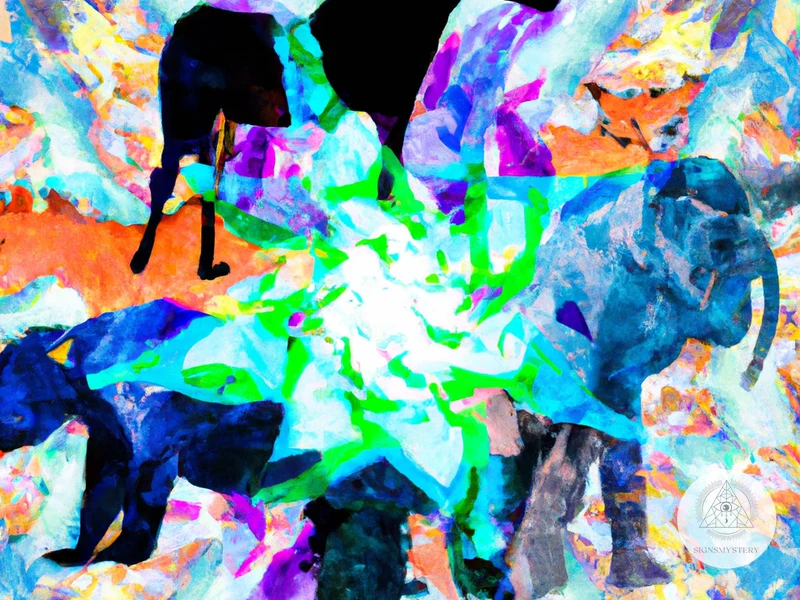
1. What is the significance of finding your spirit animal?
Finding your spirit animal holds deep significance as it can provide guidance and insight into your personality, strengths, and challenges. Your spirit animal serves as a symbol of support, wisdom, and protection on your life journey.
2. Can you have more than one spirit animal?
Yes, it is possible to have multiple spirit animals. Each spirit animal may represent different aspects of your life or provide guidance during different phases of your journey.
3. How do you know if you have found your spirit animal?
Discovering your spirit animal often involves introspection, meditation, or dream analysis. You may feel a strong connection or resonance with a particular animal, and recurring encounters with that animal in your dreams or daily life can also be an indication.
4. Can your spirit animal change over time?
Yes, it is possible for your spirit animal to change as you grow and evolve. As you go through different life experiences and phases of personal development, your spirit animal may shift to reflect these changes.
5. Are spirit animals based on belief or personal interpretation?
The concept of spirit animals is based on belief systems that vary across cultures and individuals. While some view them as spiritual entities, others interpret them symbolically as representations of certain traits or qualities.
6. Can you choose your own spirit animal?
It is believed that your spirit animal chooses you rather than the other way around. It is a deeply personal and spiritual connection that arises naturally.
7. Are spirit animals exclusive to indigenous cultures?
No, the concept of spirit animals is not exclusive to indigenous cultures. While they have deep roots in indigenous beliefs, they have also found a place in modern culture, spirituality, and psychology.
8. How can understanding your spirit animal benefit your personal growth?
Understanding your spirit animal can benefit your personal growth by providing insights into your strengths, weaknesses, and life purpose. It can help you navigate challenges, make decisions, and tap into your inner wisdom.
9. Can you communicate with your spirit animal?
Some individuals believe they can communicate with their spirit animal through meditation, visualization, or by creating a sacred space to connect with their energy. It is a personal and intuitive practice.
10. Can spirit animals appear in our dreams?
Yes, spirit animals can often appear in our dreams as symbols or guides. Dreams provide a fertile ground for subconscious communication and can offer messages and insights from our spirit animals.
References
Frequently Asked Questions

1. Why do people choose modern spirit animals?
People choose modern spirit animals as a way to connect with nature, express their personal beliefs and values, and find guidance and inspiration in their lives.
2. How do cultural influences shape our choice of spirit animals?
Cultural influences play a significant role in shaping our choice of spirit animals. Our cultural background, including traditions, myths, and stories, can shape our perceptions and understanding of different animals and their symbolism.
3. Can our emotional state influence our choice of a spirit animal?
Yes, our emotional state can influence our choice of a spirit animal. In times of struggle or self-reflection, we may be drawn to animals that symbolize strength, resilience, or the qualities we seek in ourselves.
4. What is the significance of self-reflection and growth in choosing a spirit animal?
Self-reflection and growth are significant in choosing a spirit animal because they allow us to explore our inner selves, identify areas of improvement, and strive towards personal development. The choice of a spirit animal can represent our desires for change and growth.
5. What does the lion symbolize as a modern spirit animal?
The lion symbolizes courage and leadership as a modern spirit animal. Lions are often associated with strength, bravery, and the ability to lead others with confidence and determination.
6. What qualities does the owl represent as a modern spirit animal?
The owl represents wisdom and intuition as a modern spirit animal. Owls are known for their ability to see through darkness, which symbolizes the ability to perceive hidden truths and navigate through challenging situations with wisdom and intuition.
7. How does the wolf represent loyalty and teamwork as a modern spirit animal?
The wolf represents loyalty and teamwork as a modern spirit animal because wolves are known for their strong social bonds and cooperative behavior within their packs. Choosing the wolf as a spirit animal can symbolize the importance of loyalty and collaboration in our relationships.
8. What does the butterfly symbolize as a modern spirit animal?
The butterfly symbolizes transformation and growth as a modern spirit animal. Butterflies undergo a remarkable metamorphosis, representing the potential for personal growth and the beauty that can emerge from periods of change and transformation.
9. How can animal-assisted therapy incorporate modern spirit animals?
In animal-assisted therapy, modern spirit animals can be incorporated by using images or representations of these animals to evoke emotions, promote self-expression, and stimulate discussion and reflection during therapy sessions.
10. How can dream analysis help interpret our choice of a modern spirit animal?
Dream analysis can help interpret our choice of a modern spirit animal by exploring the symbolism and messages behind the presence of certain animals in our dreams. These dreams can provide insight into our subconscious thoughts, emotions, and desires, which may be reflected in our choice of a spirit animal.

